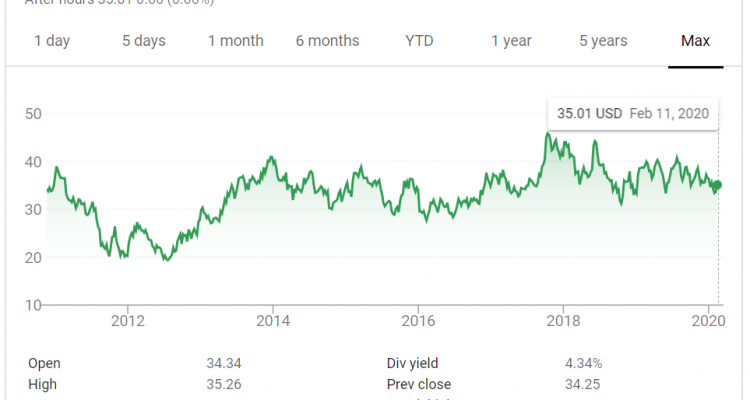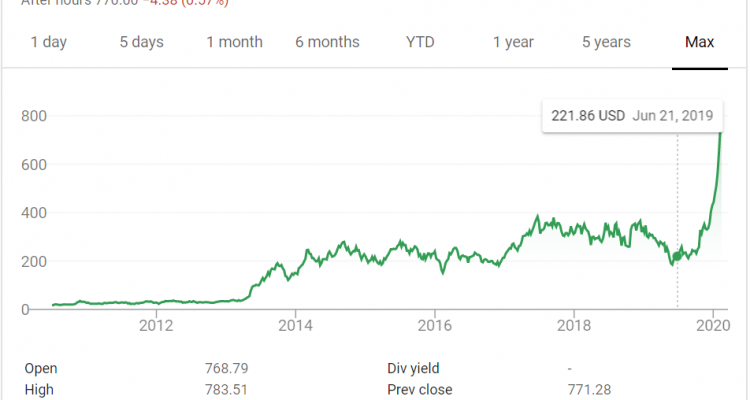I remember when I started investing, I was excited about the idea of dividends. I could generate consistent cash flow with a known rate of return much higher than a typical savings account. I wasn’t alone. There are countless online communities and blogs obsessed with only investing in dividend stocks, always looking for funds with higher yields.
Since then, I’ve realized that dividend stocks are the wrong kind of investment for most people. The problem is that many investors don’t seem to understand how dividends work and when they are useful. More importantly, they don’t understand there are better alternatives beyond dividends.
How Dividends Work
To understand why dividends are not a great investment, it’s important to understand how exactly dividends work. Every quarter, a company will pay a percentage of the stock value back to the shareholders. It is merely a way for companies to give back shareholders some of their investment without needing to sell any shares.
There is no “free” money in this transaction. The value of the dividend comes directly out of the value of the company. When dividends are distributed, the stock price immediately drops to compensate for the loss in value. This is why buying stock right before a dividend is given, and then selling right after yields no benefit (Turns out this isn’t a loophole!). You have about the same value total – some of it in the stock, the rest of it in cash from the dividend.
Looking at this from another angle, if the company didn’t give a dividend, the share price would be higher, and your total account value would be the exact same.
So a company has essentially 2 systems for handling your your hard earned cash:
- Growth/Capital Appreciation: Invest the money, grow the company, aggressively increase share price
- Income/Dividends: Invest some of the money, generate cash for investor, slowly increase share price
If we are just comparing the numbers, there’s no reason to prefer dividends to capital appreciation, they’re just different mechanisms of receiving income.
Why Capital Appreciation is Better
Even though the math is the same, I strongly prefer stocks with no dividends. It signals to me that the company is aggressively growing and will likely outperform dividend stocks in the long run.
When I buy stock, I’m giving a company hard cash that they can use to grow a company which will also grow my investment. When a company turns around and hands me back some of the cash (i.e. dividends), that is now less money they can continue to invest. The company is saying, “I can’t find anything else to do with this cash, so I’ll give it back to the investors”.
Thing is, I don’t want my money back, I want it invested. I want it to continue to grow, not sitting in my wallet. If a company can’t find a spot for it, that sends a strong signal to me that the company is “coasting” and no longer taking on big bets to grow. They have a found a sustainable business model and aren’t interested in disrupting anything. This is why dividends are mostly given by large, stable companies that generate a lot of cash and don’t take a lot of risk.
Some people will tell you that you can just re-invest dividends if you want to keep the money invested. And this is certainly true, but the company still has to plan to distribute this money, so a portion of the company is perpetually set aside rather than investing in new capital. Again, it’s not the math, it’s the mentality of growth vs stability.
Even if a growth company did generate an excessive amount of cash, there are more efficient methods to send this back to investors. For example, companies often do stock buybacks instead of paying dividends, which returns money to investors by increasing the share price. By focusing only dividend paying companies you’re just excluding companies which return value via a different mechanism.
In my early 30s, I want aggressive growth and high risk. I have enough time to weather the ups and downs with a diversified portfolio. An aggressive growth portfolio (without dividends) is far more likely to return more than a dividend focused portfolio.
GM vs Tesla
General Motors is a good example of a dividend focused stock. The company produces mostly low end cars, and there is very little iteration year after year. GM is not taking any huge risks, and nothing it does is unexpected. It is very good at mass producing affordable vehicles, and will continue to do so in the future. It’s not that the company is taking no risks. They have dabbled in autonomous vehicles, but it is a side project of self preservation, not a company wide shift.
Because of this mindset, GM pays a fantastic dividend of 4.35%. But its share price has remained relatively flat over the past decade, despite a strong surge in the overall stock market:

This means annual returns are 4.35% plus or minus a few percentage points. Not a terrible investment, but also not the most aggressive. How could GM become an aggressive company? What if, instead of paying over 4% of the stock back to investors every year, GM instead decided to invest this money towards autonomous vehicles? With a current valuation of around $50B, this would equal about $2B that GM could keep rather than passing back to investors. What if GM decided to immediately end production of conventional vehicles and pivot the entire company to autonomous cars? The company would be an entirely different investment. Risk would skyrocket, but potential gains would no longer be capped at 4-5% a year.
Tesla has the exact opposite philosophy. Their entire existence is built on a single, high risk play: Can we mass produce an electric vehicle? They are focused 100% on this, and pushing hard to compete against the traditional auto makers. There’s no way Tesla can offer dividends. It needs every dollar of cash to fund research, build production plants, and hire a top notch team to make it happen. The risk is paired with massive upside. Just ask any investor in Tesla, which is surging at the moment. An investment in Tesla in the last few years is returning 200-300% easily.

Now these examples are a bit hand picked, and certainly you could find other examples that turned out very differently, but I think it does a good job highlighting the differences between dividend focused stocks and growth focused stocks. Side note, I also don’t recommend investing in single stocks, but rather diversified funds. But the advice holds true for those as well. You can find plenty of dividend mutual funds or growth funds.
Overfocusing on Dividend Stocks
I”m not purely against dividend stocks. I actually hold many stocks that pay dividends. But I didn’t choose any of the stocks because they pay a dividend. I chose them because they are part of a larger diversified fund, such as a total market index fund.
What I”m against is focusing solely on dividend stocks. It’s somewhat arbitrary and will likely return lower gains than including growth stocks. It’s like a football team deciding they will focus only on field goals. They might get a lot of points, but probably not as many as if they tried for touchdowns as well. The opportunity cost is devastating, yet can be so hard to see.
What About Later in Life?
There may be a good case for holding more dividend stocks later in life. Once I’m over 50 and looking at retirement, dividend stocks will start to look more favorable. This is when you want money in large, stable companies that produce reliable, consistent returns. Sounds a lot like dividends.
But there are still some downsides that make me skeptical that dividends are the best investment. Even with a great yield, investing directly in GM is still risky as an individual stock. Diversification is great way to reduce risk, but I would need to find dozens of other stocks with a similar yield to maintain my overall yield and reduce the risk. Turns out, there are not very many companies that pay high yields, so as you diversify, you have to add more lower yield stocks to the mix, brining down the overall yield in the fund. This is why most dividend funds seem to pay much lower dividends than individual stock (think 2% vs 4%+).
I think a much better strategy is to pick lower risk income funds with a mix of bonds. The funds will likely have stocks with higher yields, but you won’t be limiting yourself with a pointless dividend-only rule.
Taxes
Taxes are another consideration for dividend stocks . I”m not a tax expert, so don’t take this as any kind of tax advice, but I do like to know enough to maximize returns and minimize what I give to Uncle Sam. Dividends are often considered tax-inefficient. You generally only pay taxes on investments when you sell them, meaning you get to decide when to pay the tax. Dividends distributions are similar to selling a small part of your investment, except it’s automatic and you don’t have much control over it. This is why Warren Buffet’s funds do not pay dividends.
Focus on the Right Thing
The goal of investing is to increase your wealth, and you do this by aiming for high returns while minimizing your risk. Hyper-focusing only on dividend stocks blinds you to other strategies that likely will produce higher returns at a similar risk profile. Don’t get caught up in the yield, even though that’s the easier number to see. Look at total expected return, and you will do much better.
